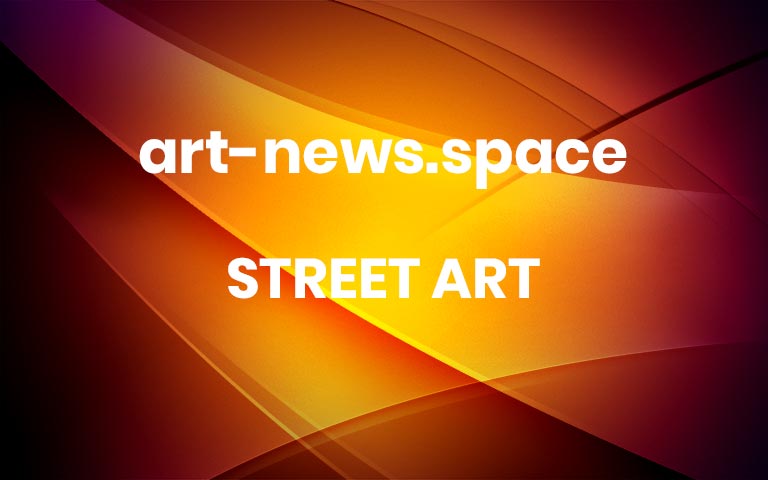13 Hidden Art Gems You Can Visit for Free During Open House New York
One of the city’s most unique cultural events is back for 2025, with architectural sites and cultural organizations welcoming the public for Open House New York, a weekend-long event running October 17 to 19.
Open House New York has been celebrating the city’s most beloved landmarks, as well as its forgotten corners, since 2003, offering free or low-cost access to spaces that aren’t normally open to the public. Want to check out the filtration system at the massive Astoria Pool, for instance? The Open House tour will mark the first chance in the modernist landmark’s 89-year history. Or you can go behind the scenes at the Goodwill in Downtown Brooklyn.
The offerings include a passive house in Harlem, a Department of Sanitation composting facility on Staten Island, and, if you’re willing to show up at 4 a.m., the Fulton Fish Market in the Bronx. There are also architecturally stunning landmarks, like the Beaux Arts Hall of Records designed by John Rochester Thomas and completed in 1907, or the Lever House, the groundbreaking 1952 International Style office building by Skidmore, Owings & Merrill.
There’s also plenty of museums to visit and art to see, such as four separate MTA Arts and Design subway tours, or a rare look at the flood mitigation system architect Renzo Piano installed at the Whitney Museum of American Art after Hurricane Sandy flooded the construction site. (There’s a reason we likened the building to Noah’s ark when it opened back in 2014.)
This year’s edition features 342 venues across all five boroughs, 164 of which are open for drop-in visits. The other 178 sites are ticketed, with timed reservations for just $7 a person which will be released on Friday, October 3, at 12 p.m. We’ve compiled a list of the most intriguing options for both ticketed and open-access venues. Enjoy!
DROP-IN VISITS
32 Avenue of the Americas Lobby
Hildreth Meière’s Continents Linked by the Telephone and Wireless ceiling mosaic for 32 Avenue of the Americas, the former AT&T Long Distance Building. Photo: courtesy of the International Hildreth Meière Association
Today, lobby art is easy to ignore, your eyes skipping past whatever bland, large-scale, painting is hanging on your way to the elevator bank. But the Art Deco muralist and mosaicist Hildreth Meière (1892–1961) was a master of incorporating artwork into public spaces, like the dazzling glass mosaic ceiling representing the connectivity of telephones she did for the former AT&T Long Distance Building. Stop by for a tour from members of the International Hildreth Meière Association, which is also offering ticketed Open House visits to see her stunning, landmarked Red Room at the new Printemps department store.
32 Avenue of the Americas, New York, New YorkOctober 17–19, 12 p.m.–4 p.m.
Morbid Anatomy Museum
The Morbid Anatomy Museum. Photo: courtesy of the Morbid Anatomy Museum, Brooklyn.
This quirky Brooklyn museum closed after just two-and-a-half years in business due to money issues, but it was revived at Greenwood Cemetery and most recently in Industry City. There will be free tarot readings for Open House New York, plus the opportunity to peruse the collection of all things related to death, medicine, anatomy, taxidermy, and much more.
Morbid Anatomy Museum, Industry City, 254 36th Street, Building 2, Floor 2, Suite C248, Brooklyn, New YorkOctober 17–19, 12 p.m.–4 p.m.
Materials for the Arts
Materials for the Arts. Photo: by Samantha Paradiso.
You may not know it, but this city keeps 6.1 million pounds of materials out of landfills thanks to this creative reuse center, which distributes to free materials to the NYC Department of Education and upwards of 7,000 arts and cultural organizations.
Materials for the Arts, 33-00 Northern Boulevard, Floor 3, Long Island City, New YorkOctober 19, 10 a.m.–6 p.m, last tour 5 p.m.
Allison Eden Studios
Allison Eden at her mosaic studio. Photo: by Gary Goldenstein.
Allison Eden has made glass mosaics for all 50 states, as well as abroad, including for private homes as well as bars, restaurants, casinos, and even cruise ships. Now you can get a glimpse into her art factory.
Allison Eden Studios, 164 Cook Street, Brooklyn, New YorkOctober 18–19, 10 a.m.–4 p.m.
M&S Schmalberg Flowers
M&S Schmalberg Flowers. Photo: John Ng.
M&S Schmalberg opened in the Garment District in 1916. Now it’s the city’s last-remaining fabric flower factory, stocked with vintage brass molds, hand-shaped petals, and century-old pressing irons.
M&S Schmalberg Flowers, 242 West 36th Street, Floor 7. New York, New YorkOctober 19, 9 a.m.–3 p.m, last tour 2:30
TICKETED TOURS
Harlem River Bridges, Parks and Landmarks Walking Tour
Photo: Nathan Kensinger, courtesy of Open House New York.
Led by Nathan Kensinger and Duane Bailey-Castro, who have photographed the Bronx shoreline for 15 years, the tour offers an artist’s view of the Harlem River, surfacing its rich history and ecology.
Highbridge, BronxOctober 18, 12:00 p.m.—2.30 p.m.
Cathedral of St. John the Divine
The stained glass windows at St. John the Divine Cathedral in New York. Photo: by David Hogarty, courtesy of Open House New York.
If you’re not afraid of heights and want to climb 124 feet, up 12 flights of stairs, this is your chance to get up close and personal with the stained glass at St. John the Divine, the world’s largest Gothic cathedral. Tickets for the vertical tour are normally $27.50, so this is a great deal. (Note, however, that children under 12 are not allowed.) The architect Ralph Adams Cram insisted that the colorful panes be manufactured with medieval techniques, from pot-glass made of sand and metal ash. There are over 150 windows from different artists and eras—the church is still technically under construction—but the central rose window was designed by Boston’s Connick Studio, run by artist Charles Jay Connick, under Cram’s guidance.
Cathedral Church of St. John the Divine, 1047 Amsterdam Avenue, Morningside Heights, New York, New YorkOctober 18, 12 p.m.–1 p.m., 2 p.m.–3 p.m.
Robert Rauschenberg Foundation
Artwork by Robert Rauschenberg at the Robert Rauschenberg Foundation. Photo: courtesy of the Robert Rauschenberg Foundation.
It’s Robert Rauschenberg’s centennial year, with major exhibitions in the city at the Museum of Modern Art and the Museum of the City of New York. The artist turned this former religious orphanage into his home and studio in 1965; now it is home to his foundation and the current exhibition “Autobiography and Other Stories: Robert Rauschenberg in Words and Images.”
Robert Rauschenberg Foundation, 381 Lafayette St, New York, New YorkOctober 18–19, 12 p.m.–1 p.m., 1:30 p.m.–2:30 p.m., 3 p.m.–4 p.m.
Socrates Sculpture Park and Mark di Suvero Studio
Spacetime, Mark di Suvero’s studio. Photo: courtesy of Socrates Sculpture Park.
In 1986, the great sculptor Mark di Suvero turned an illegal dumpsite on the Queens waterfront into a free sculpture park. But Open House New York is the only time you can visit Spacetime, his incredible studio next door. Richard Morales, director of public programs at Socrates; Shaun Leonardo, co-director at Socrates; and Ivana Mestrovic, director at Spacetime.
Spacetime and Socrates Sculpture Park, Long Island City, Queens, New YorkOctober 18, 2 p.m.–3:30 p.m.
Jack Shainman Gallery
Jack Shainman Gallery. Photo: courtesy of Jack Shainman Gallery.
This tour of Jack Shainman’s stunning new Tribeca space inside the landmarked New York Life Insurance Company Building includes special access to the gallery’s private spaces, including the former bank vault. The current exhibition is a massive Hank Willis Thomas show.
Jack Shainman Gallery, 46 Lafayette Street, New YorkOctober 17–19, 10:30 a.m.–12 p.m.; 1 p.m.–2:30 p.m.
Hispanic Society Museum & Library
Hispanic Society Museum & Library. Photo courtesy of the Hispanic Society Museum & Library.
Get a behind-the-scenes tour of the ongoing restoration work from Beyer Blinder Belle Architects & Planners at the landmark Audubon Terrace cultural campus in Washington Heights.
Hispanic Society Museum & Library, Audubon Terrace, 3741 Broadway, New York, New YorkOctober 18, 11 a.m.–11:45 a.m.; 1 p.m.–1:45 p.m.
WTC Rebuilding Gallery & Artists Studios
Murals on the 79th floor of 3 World Trade Center. Photo: courtesy of Silverstein Properties.
The real estate firm Silverstein Properties has long given artists space at the World Trade Center, where it holds a 99-year lease. Artists can apply for a free-year-long residency on the 28th floor of 4 World Trade Center with Silver Art Projects, but the views are even better at 3 World Trade Center, where there’s an on-site resident artist program and mural collection on the 79th floor. The company is offering tours of the artist studios there, as well as its private art collection galleries up on 80.
3 World Trade Center, New York, New YorkOctober 17, 10 a.m.–10:45 a.m., 11 a.m.–11:45 a.m., 12 p.m.–12:45 p.m.
Colossal Media
The headquarters of hand-painted outdoor advertising company Colossal Media. Photo: courtesy of Colossal Media.
Hand-painted outdoor advertising company Colossal Media paints murals around the world. A tour of its Brooklyn warehouse—part paint store, part art studio, and part painted signage museum—will show what goes into the pre-production process, before the artists go on site and work their magic.
Colossal Media, exact address TBA, East Williamsburg, BrooklynFriday, 10 a.m.–11 a.m., 11 a.m.–12 p.m. More



